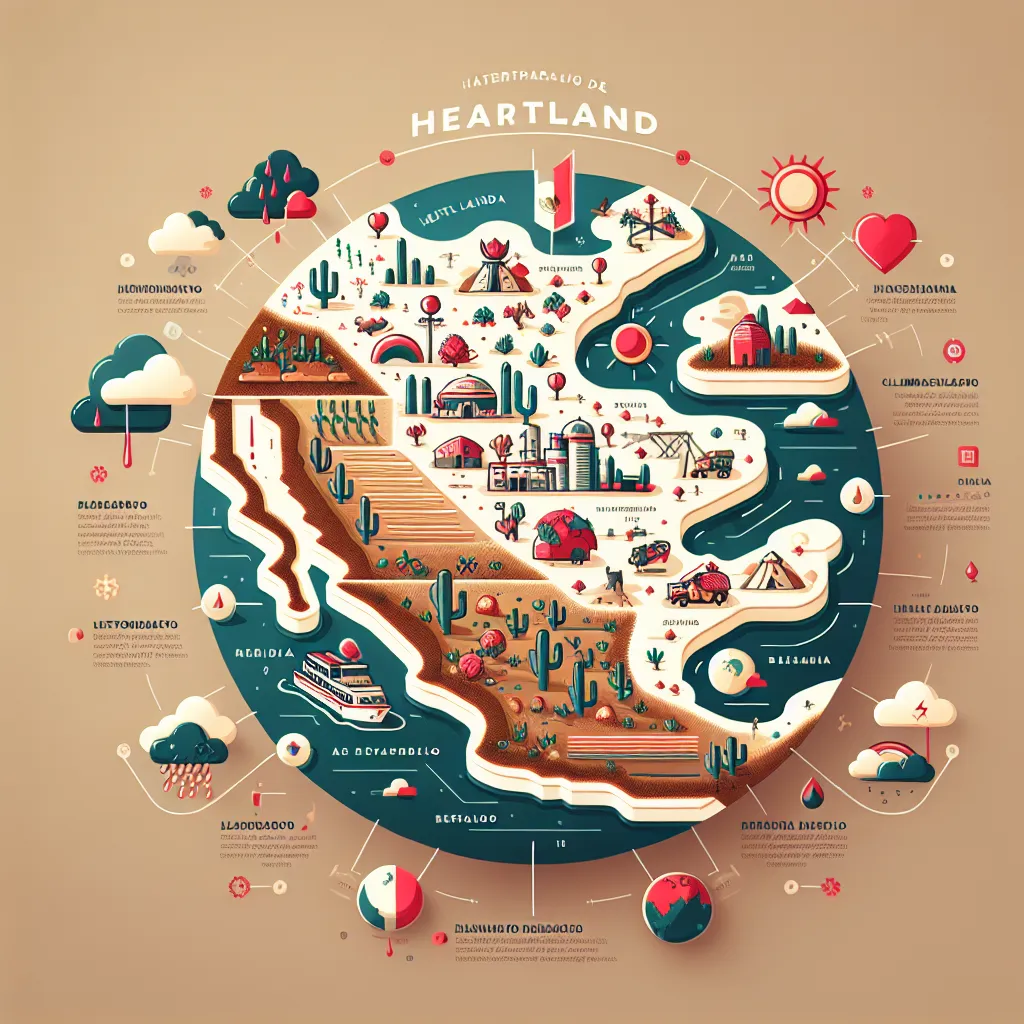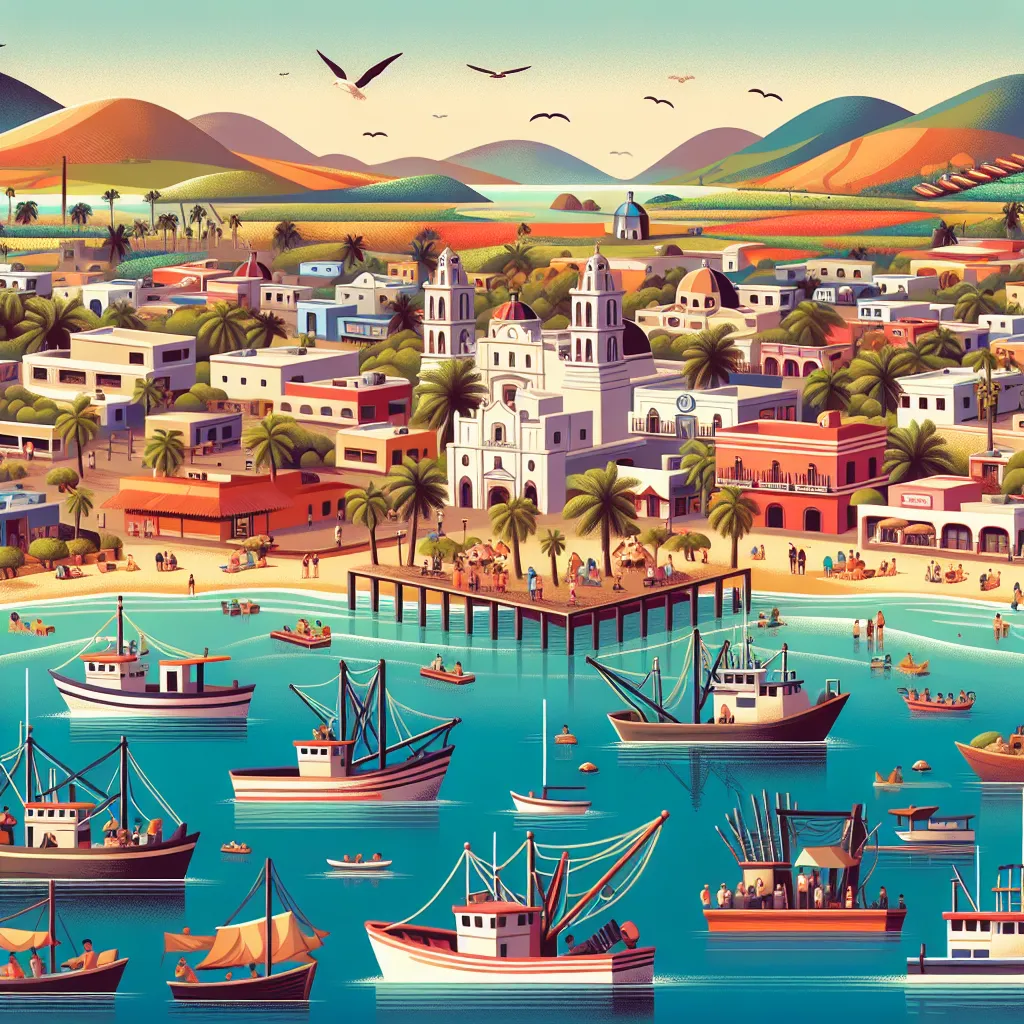Ask AI on The Internet
Question: How do natural hazards and climate affect the heartland region of Mexico
The heartland region of Mexico, which includes areas such as Mexico City and surrounding central states, experiences a variety of natural hazards and climatic conditions that can have profound impacts on the population, infrastructure, and economy. Here's an overview: ### Natural Hazards 1. **Earthquakes:** - **Frequency and Risk:** The heartland region is seismically active due to its location near the boundary of several tectonic plates (the North American Plate, the Pacific Plate, and the Cocos Plate). This makes the area prone to significant earthquakes. - **Impact:** Earthquakes can cause considerable damage to buildings and infrastructure, disrupt daily life, and lead to loss of life. The 1985 Mexico City earthquake and the more recent 2017 earthquake are stark reminders of the risks involved. 2. **Volcanic Activity:** - **Popocatépetl Volcano:** One of the most active volcanoes in the region, Popocatépetl can pose threats through eruptions, ashfall, and lahars (volcanic mudflows). These volcanic activities can result in evacuations, health problems due to ash inhalation, and damage to agriculture and infrastructure. 3. **Floods:** - **Seasonal Rains:** Heavy rainfall during the wet season (typically from May to October) can lead to flooding. Urban areas, including Mexico City, are particularly susceptible to flooding due to poor drainage systems and extensive impervious surfaces. - **Impact:** Flooding can damage homes, infrastructure, and transport networks, and can also contaminate water supplies, leading to health issues. 4. **Landslides:** - Landslides are often triggered by heavy rainfall and can be exacerbated by deforestation and land use changes. They can bury roads, homes, and farmland, causing significant economic and social disruptions. ### Climate 1. **Seasonal Variability:** - The heartland region experiences a distinct wet and dry season. The wet season, which generally lasts from May to October, brings most of the annual rainfall. The dry season, from November to April, can lead to water scarcity issues. 2. **Temperature Variations:** - Temperatures can vary significantly with altitude. Higher elevations, such as in Mexico City, have cooler temperatures, while lower areas are warmer. Extreme temperatures can affect energy consumption, particularly for heating and cooling. 3. **Climate Change Impacts:** - **Changing Rainfall Patterns:** Climate change is likely to exacerbate the unpredictability of rainfall, potentially leading to more intense and frequent droughts and floods. - **Increased Temperature:** Rising temperatures can affect water supply, agriculture, and health. It may also lead to more frequent and severe heatwaves, which can be particularly challenging for vulnerable populations. - **Agricultural Impacts:** Changes in climate conditions can affect crop yields, reduce agricultural productivity, and lead to food insecurity. ### Preparedness and Adaptation 1. **Infrastructure Improvements:** - Investing in earthquake-resistant buildings and improving drainage systems can mitigate some of the impacts of natural hazards. 2. **Disaster Preparedness:** - Developing and implementing comprehensive disaster response plans, conducting regular emergency drills, and educating the public can improve resilience to natural hazards. 3. **Sustainable Practices:** - Promoting sustainable land use practices, such as reforestation and soil conservation, can reduce the risk of landslides and enhance natural water retention. 4. **Climate Adaptation Strategies:** - Implementing water conservation measures, diversifying crops, and investing in climate-resilient infrastructure can help the region adapt to the changing climate. Understanding the interplay between natural hazards and climate is crucial for developing effective strategies to protect the heartland region of Mexico and ensure its sustainable development.
Think your answer is better than the AI's? Post it below.
Other Most Relevant Posts:
 Climate Change Impacts on Coastal Regions of Sub-Saharan Africa: Analyzing the Threat of Tropical Cyclones and Extreme Weather Events
Climate Change Impacts on Coastal Regions of Sub-Saharan Africa: Analyzing the Threat of Tropical Cyclones and Extreme Weather Events
Question Tags
If you want your question answered by an AI, click here.






Post your own comment: